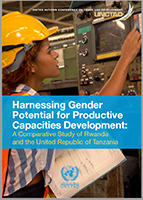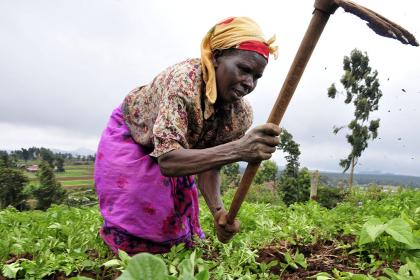
Over the past few decades, there has been growing emphasis and interest in developing productive capacities of African countries to build resilience to shocks, enhance integration into the multilateral trading system, and foster inclusive and sustained growth.
As part of efforts to address the economic consequences of the COVID-19 pandemic, and build back better, African governments have also renewed their commitments to building productive capacities and transforming their economies, as evidenced by the emphasis accorded to these issues in their economic recovery and development plans.
Despite this recognition of the importance of developing productive capacities in Africa, and the limited resources available, the role of women has not been explicitly or appropriately integrated into the productive transformation agenda of most African countries.
Against this background, this report explores how to harness gender potential in Africa for productive capacities development, using Rwanda and Tanzania as case studies. The case studies focus on Rwanda and Tanzania because they are beneficiaries of the 12th Tranche United Nations Development Account project on “Coherent strategies for productive capacity development in selected African Least Developed Countries.”
The two countries are also interesting case studies because they have achieved impressive economic growth in the past two decades, yet they have very high poverty rates due largely to the lack of productive capacities and the fact that recent growth has not been inclusive. Furthermore, although they are both least developed countries, Rwanda is landlocked while Tanzania is not. This diversity of features provides for an interesting comparative analysis of the challenges facing African LDCs in harnessing the potential of women for productive transformation and development.
The report indicates that women’s productive capacities have not been optimally developed and utilized in Rwanda and Tanzania, and that this is manifested in:
- The predominance of women in the agricultural sector and low productivity activities in the informal sector.
- Low participation of women in the manufacturing activities.
- Low representation and participation of women in science and technology as well as in technology-intensive activities.
Unless women’s productive capacities are actively developed in these fields, the Fourth Industrial Revolution will bypass them, and their governments will miss the opportunity to tap a vital resource for productive transformation and development.
The report provides very good rationale for governments of Rwanda and Tanzania to prioritize the development of women’s productive capacities. It suggests that building women’s productive capacities is not only morally right but also good economics because it would:
- Leverage women’s demographic dividend and accelerate growth.
- Raise women’s productivity and income and reduce poverty and inequality.
- Close the “gender deficit”, particularly in frontier sectors.
- Raise capacity utilization rates in industries.
- Protect women from shocks and vulnerability.
- Foster structural transformation.
- Better position Rwanda and Tanzania in global value chains.
- Prepare women for participation in the Fourth Industrial Revolution.
- Foster women’s dignity, freedom and respect.
- Contribute to the achievement of the sustainable development goals.





